To cross into Armenia, we took the brand new sleeper train from Tbilisi to Yerevan. Booking our tickets all the way to Yerevan was another in a series of slight miscalculations – we’d so easily booked last minute accommodation in Georgia that it came as a bit of a shock to find that there was barely anything available in Yerevan, and anything that was available was very expensive. We made some friends on the train (who had moved to Armenia from Moscow, but some months ago) who explained to us that Armenia had seen an influx of Russian citizens in recent weeks because it was one of the few countries where it was possible to travel on a national ID (since apparently many Russians don’t have full passports), and this might explain the shortage of accommodation.
We decided to switch our itinerary to visit Gyumri first. This left us with two options:
- Get off the train in the middle of the night when it stopped at Gyumri, knowing that Armenian cafes don’t open for breakfast until around 9.30am
- Enjoy a full night’s sleep on the train, before turning around and travelling the three hours straight back to Gyumri
We opted for option #2, since arriving at 4am didn’t sound like much fun. It was also an excuse to take another train, only this time we’d be able to take in some of the scenery as we trundled along after leaving Yerevan’s beautiful station.


Gyumri is Georgia’s second largest city, but its name is still synonymous with the earthquake which practically levelled the town in 1988, killing 50,000 people and displacing even more. The reconstruction effort has been ongoing ever since, with ruined buildings and others undergoing repairs visible throughout the city, including the city’s old hospital (below right), which was rebuilt from scratch next door, leaving the ruins to be consumed by nature.


Still, those buildings that had been restored continued to use the distinctive black and orange tuff (volcanic rock), giving the city a unique architectural style.
The town is built out from Verdanants Square, a vast area flanked by the Cathedral of the Holy Mother of God at one end and the Holy Saviour’s Church at the other. The cathedral has been fully restored since the earthquake in black tuff, with two of its predecessor’s spires preserved in the cathedral’s gardens.


The exterior of the church at the other end of the square had also been restored, but inside work still continued. We were a bit surprised to be beckoned into the building site by the man who was working alone inside the church, but it was worthwhile to see just how much of a project it was to restore it to its former glory.


We also came across a picture of the church taken shortly after the earthquake, which was pretty staggering – there was very little left standing.
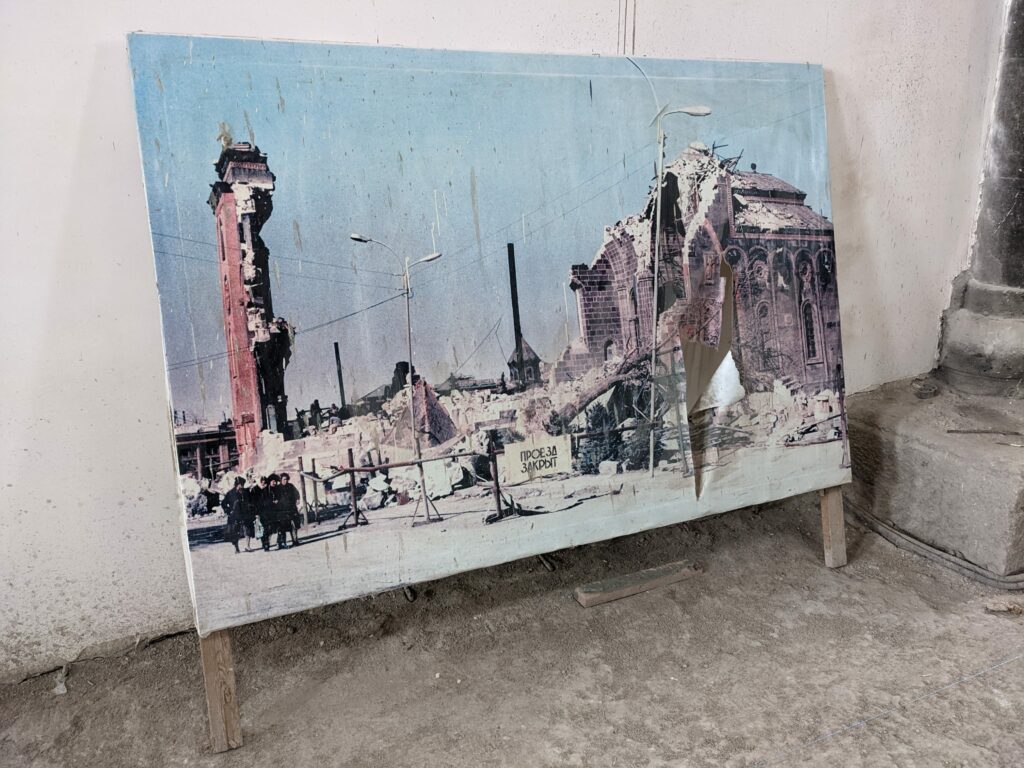
Our favourite meal in Gyumri was undoubtedly the lunch we ate at Gwoog Gastrohouse. The first dish to come out was heavily buttered scrambled egg with basturma, a type of salty cured beef (not pictured as we ate it way too quickly). Next up was chrov pilaf, a rice side with apricots, dates and raisins (we realise this was a slightly strange accompaniment to eggs, but that was on us!) Finally, a whole plate of lamb dolma arrived, complete with fresh lemon and sour cream. All of this was washed down with a sweet apricot and raisin Kompot, a drink we’d never heard of, but that went down a treat!
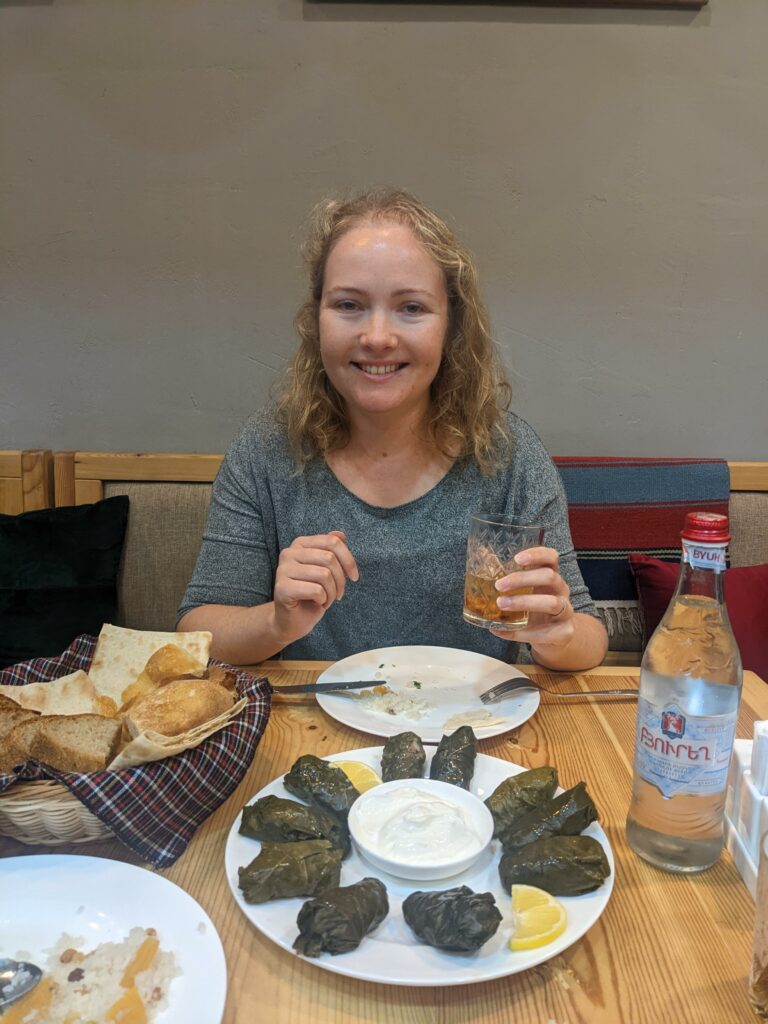
We also treated ourselves to a donut each from Ponchik Monchik. These are hollow deep fried dough balls, filled with either vanilla custard, chocolate spread, or jam, and dusted with icing sugar. After demonstrating how much the filling hole looked like a mouth, Sara then painted her nose white with icing sugar with her first bite. Absolutely delicious, and we could probably have eaten two each!
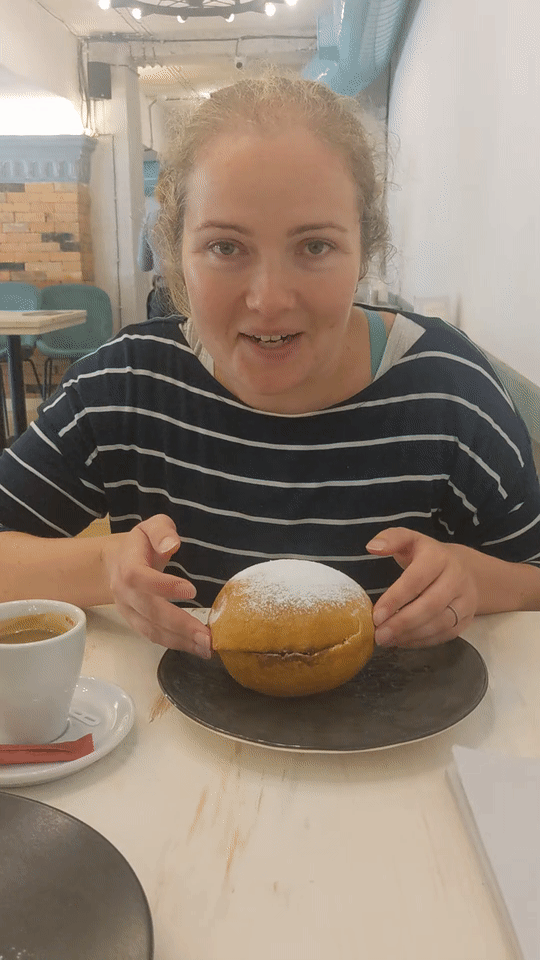
To burn off some calories, we took a walk out to Gyumri’s Mother Armenia – a colossal statue on the edge of town which somehow survived the devastating earthquake. She watches over Gyumri, with one arm raised to the sky and her back clearly turned to the Turkish border less than 10km behind her. Still, her view across Armenia was spectacular.


Just next door to the statue lies the Black Fortress, a military installation built with typical Gyumri black tuff, which has more recently been converted into a live performance venue. Both attractions were eerily quiet, with just the odd wandering tourist and a few local kids out exercising.


We took a short diversion on our way back into town through Gyumri’s Central Park. From the outside, this appeared to be a wild and seldom used park, but once inside, we found that the park was dotted with beautiful architecture and Soviet statues.


As well as yet another amusement park…


After exploring Gyumri’s main attractions, it was time to pay some attention to the increasingly messy matt of hair on my head. We headed to Lux Barber Shop, a traditional barbers filled with wood panelling, mirrors and metal and leather chairs. With my Armenian language skills stretching to “hello”, “goodbye” and “thank you”, I resorted to showing the barber a few photos taken shortly after my last hair cut. He gave the photos a passing glance before leading me towards a chair and picking up the clippers. Sara watched on from the entrance as I had one of the most tense hair cuts of my life, but at least I didn’t have to engage in the normal barber small talk. In the end, the barber did a great a job despite my lack of communication skills, and I left Gyumri looking much smarter than the state in which I arrived.

Our next destination would be Vanadzor, a typical Soviet town and the gateway to the Debed Canyon, with Yerevan now demoted to the end of our Armenian itinerary.
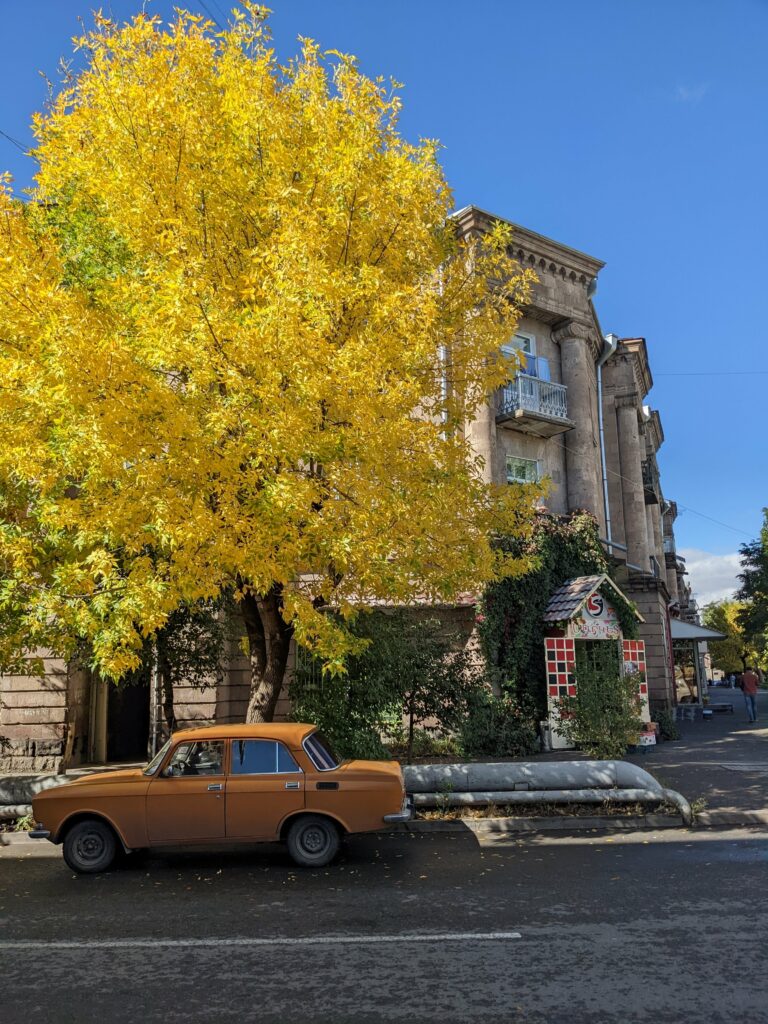
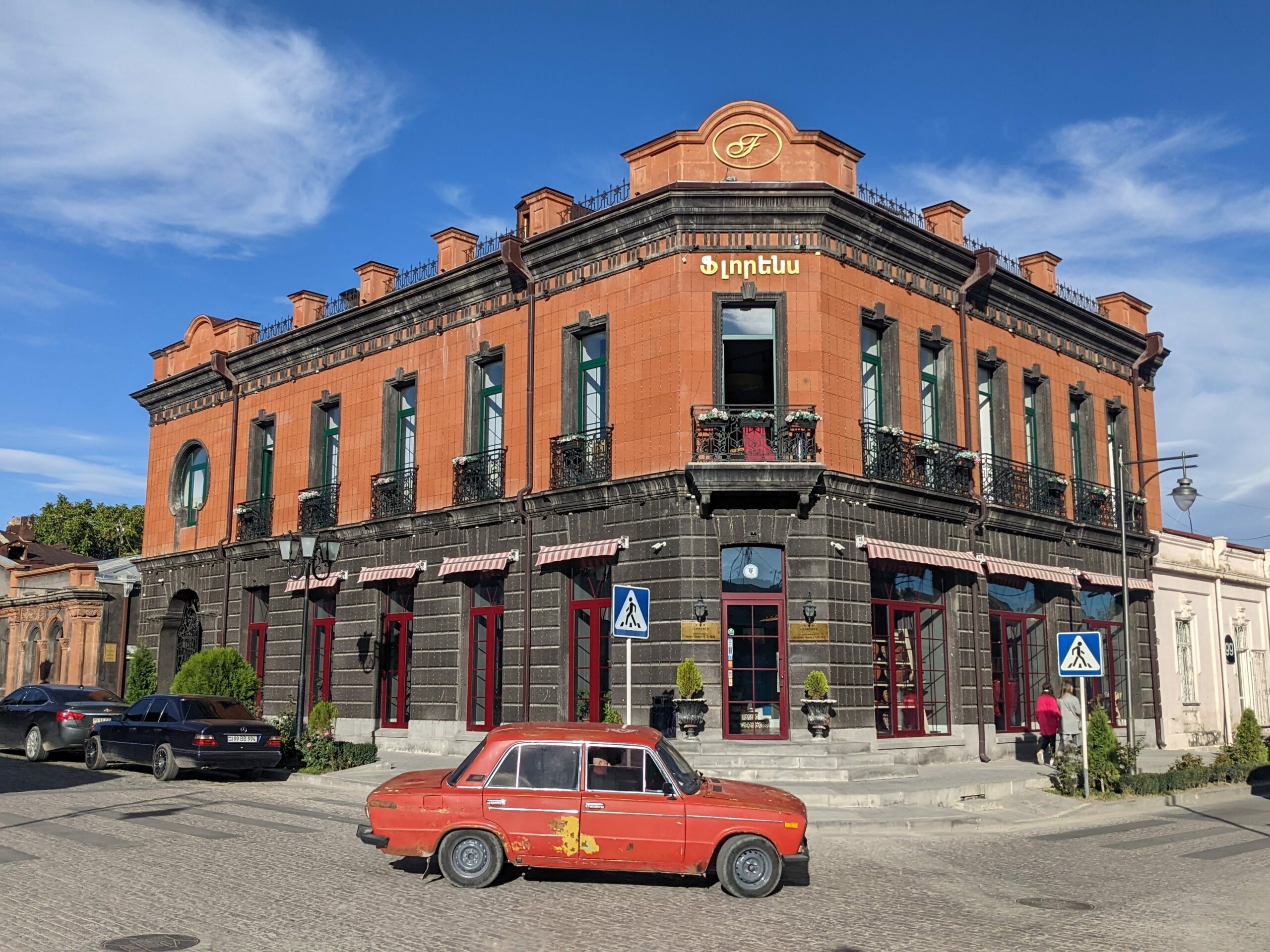
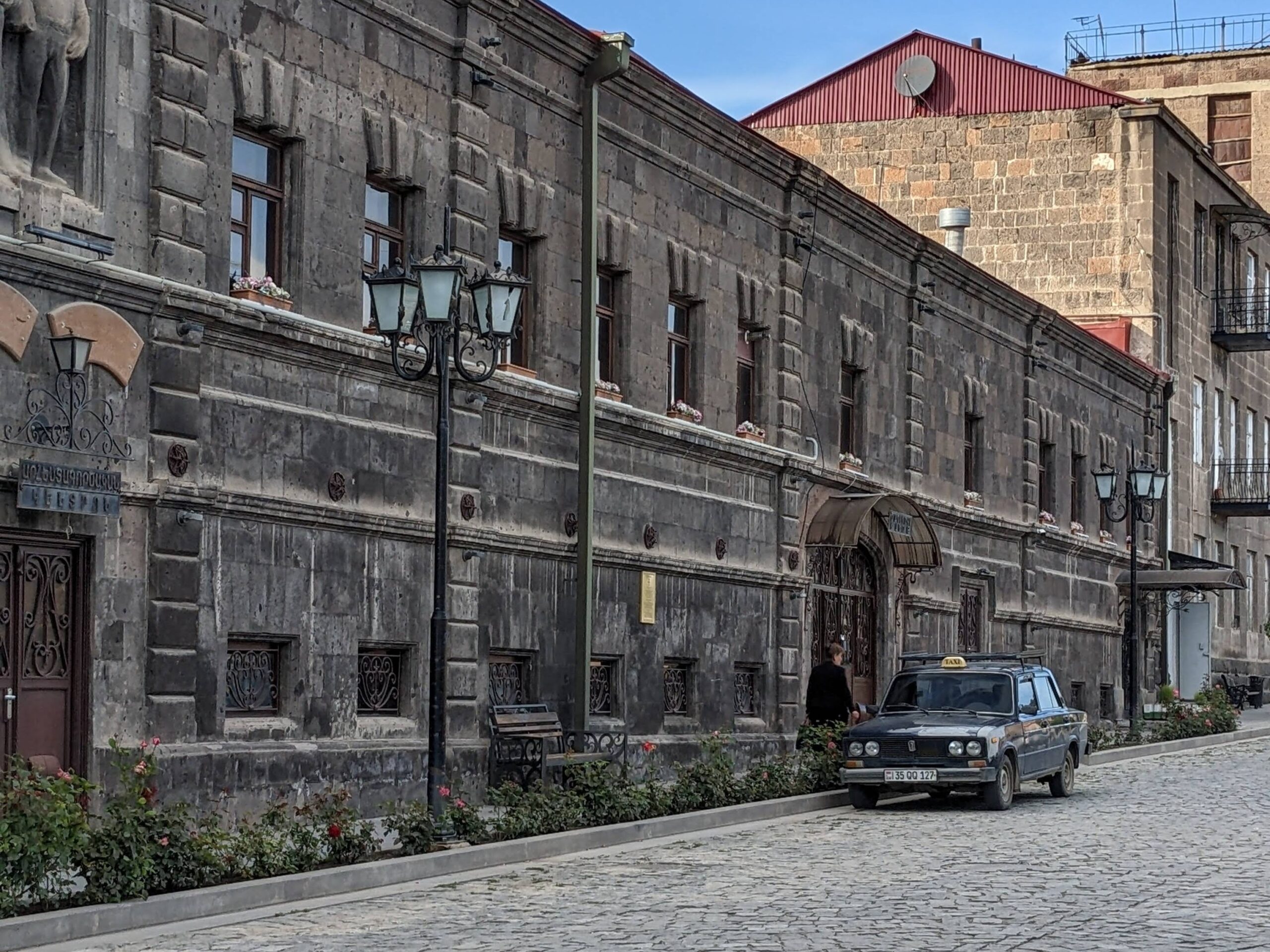

I’ve tried to lipread but can’t work out what Sara’s donut is trying to say!
Mur-mur?
Pretty much!